It’s hard to believe it was only a few months ago the deadly bushfires upended Australia’s summer season, throwing much of the nation into months of chaos, fear, and uncertainty. And the NSW town of Braidwood was right in the middle of it all.
Nestled on the Kings Highway, linking Canberra with the glittering South Coast, Braidwood found itself cut off for weeks at a time after the North Black Range bushfire erupted in the region. Road closures had a devastating impact on Braidwood’s businesses – the historic town relies on holiday-goers passing traffic for trade.
When the rain finally arrived in mid-January, Braidwood barely had a chance to take a much-needed breath before the coronavirus hit. This new crisis is putting the town’s local print paper The Braidwood Times, which has covered crucial stories like the bushfires for over 150 years, under threat.
Every town has a history
John Stahel, a volunteer at the Braidwood museum, reckons that as an isolated community, the long history of papers in the district has helped to define Braidwood’s social fabric.

The old main street of Braidwood. Image: Braidwood Museum.
Before European settlement, the site was occupied by the Dhurga and Walbundja people. It was 1825 when surgeon Dr Thomas Braidwood Wilson took up land in the region and established what would become the town today.
The gold-rush in the 1850s energised Braidwood and by 1852 the town had swelled to 15,000. In 1858, during this economic boom, the first rag was launched, the Braidwood Dispatch, which was run for more than 100 years by three generations of the same family. For a long time, Braidwood was spoiled for choice for news – another paper – the Braidwood Review, operated for over 50 years. A weekly, the Tallaganda Times, enjoyed success before it was bought out by larger entities.
Braidwood has never been short of stories, from the Clarke brothers robbing and killing in the district in the 1860s to Mick Jagger gracing the main street playing the leading role in Ned Kelly.
Digital-first, print second
Not everything, though, remains the same.
In more recent years, the Dispatch, now the Braidwood Times, became a weekly paper, published every Wednesday covering Braidwood and its surrounding villages, with readership across the new Queanbeyan-Palerang regional shire. The paper published news and current affairs and reflected its community heritage.
Now, because of coronavirus, the Braidwood Times has stood down all of its staff, bar the newly appointed Goulburn-based editor, Michelle Thomas.
The newspaper is no longer being printed in hard copy, with all resources put into the Goulburn Post as the “regional hub” of the area because of its online paywall. All print materials and office spaces have been abandoned to concentrate on the ones that can keep afloat.
Ten years ago, the Braidwood Times was owned by Fairfax. Today, it is part of Australian Community Media – which is responsible for over 160 regional publications with uncertain futures. The staff number at the Braidwood Times, even before coronavirus, had fallen to its lowest level, according to Thomas.

A 1912 article in a Braidwood Paper predicting climate change. Image: Braidwood Times Facebook Page.
All papers under the ACM banner developed an identically formatted website with the same material pool and software – promoting a “digital-first, print secondary” model. A Facebook page and website supplemented the Braidwood Times paper, reporting breaking news, events and commentary.
Some haven’t warmed to the technological change. Braidwood editor and publisher Paul Cockram acknowledged that “print on paper is in decline” and many titles, regional and urban, were now on “life-support”. This was happening well before COVID-19, with social media giants swallowing up advertising revenue.
“The internet has ripped the guts out of print advertising and therefore the ability of publishers to pay for high-quality content,” Cockram said.
But Cockram also sees strong opportunity for local print media to survive because its “small-scale, tangible and relevant”. And, if it has the communities support, a local paper provides a public forum for expression and ideas.
Though electronically delivered media has its strengths, he says it is a “diabolically weak social glue” compared to a print paper.
“Braidwood needs a newspaper run by locals who care enough for their community to want to see local happenings reported,” he said.
Every community needs a paper
Robin Tennant-Wood was the sole journalist at the Braidwood Times in 2018, after retiring as a politics lecturer at the University of Canberra. Though she “retired” again late last year, Robin learned a few things on the job as a country journo, namely, that there is still “a need” for local news in print.
Tennant-Wood found that small communities like Braidwood want to feel “a degree of ownership” over their local paper.
Tennant-Wood was already “pretty well known” around town when she took up her post with the Braidwood Times, and found that this was to her advantage as a reporter.
“They (locals) like to have a connection with the person who’s running the paper…and to feel that they have input into what is being reported,” she said.
Local media is also an opportunity for the community to contribute and have a voice. Tennant-Wood emphasised when she ran the Braidwood Times, she was “always happy” to accept community submissions, whether it be an obituary for a local or a Community Association report.
“If someone went to the trouble of writing it, I would ensure it was printed,” she said.
Local stories are key
The Braidwood Times has always been grounded in local stories with a local focus.
Tennant-Wood knows that people, first and foremost, are interested in the happenings of their immediate community – and this is what the Braidwood Times delivered and larger papers, with a wider reach, lacked.
“People want to know what’s happening at the local schools, the local football team’s results, who died recently … profiles of new business ventures,” she said.
“During election campaigns, they want to know what the candidates can do for their local community.
“The overriding feeling is that – and people have said precisely this to me – if I want to know what’s happening elsewhere, I’ll buy the Sydney Morning Herald.”
Every community is different, and you can count on the fact that the local paper caters to these differences and reflects them in print.
“Some towns have strong sporting cultures, some are rural centres, others live and die on tourism – whatever the local culture if this is reflected in the paper then the community feels it is being well served and represented by its media,” Tennant-Wood said.
In Braidwood, this means a “vibrant and very active arts scene,” full of creatives, designers and artisans. And Tennant-Wood made sure “pretty much every issue” of the Braidwood Times reflected the unique culture of the town.
Community members like Kathy Toirkens, a hobby photographer who regularly had pictures published in the Braidwood Times, agrees.
She reckons a regularly printed local paper, with local content, is “important” because it “helps to provide and strengthen connection in the community, both for people who live locally, and for people who grew up here but have moved away”.
Local stories, like Braidwood’s Redbacks rugby team, the famous Quilt event in town, Braidwood Open Gardens and the Braidwood show might not have gotten the same coverage without a local paper.
The future of the Braidwood Times
At the moment, all papers in the area are expected to be back up and running for July, but it is difficult to predict the future in turbulent times.
The printing room at the Canberra Times, where the Braidwood Times is printed, has also had to stand down a lot of staff due to coronavirus but is expected to return by July.
Thomas acknowledged that the swift, crushing response to COVID-19 might have happened to some degree anyway as a result of other factors, like lost advertising revenue and a decline in print media across the board.
“News reports on the demise of local mastheads … have been rife,” Thomas said.
“In the end, newspapers are a business and not a community service, which means if we don’t make money we can’t continue.”
But despite the print hiatus, Thomas thinks this is “not the end” for the Braidwood Times.
The future is uncertain, but it helps to have people committed to their community, like Tennant-Wood and Cockram.
With backing behind them, the pair have filled the recent print media gap with the newly established Braidwood Changing Times.
The first edition is packed with local content, like bushfire coverage on the continued clean up, Anzac Day commemoration and meditation on change.
They’re not in it for the money, but they’ve had “immediate” community response. With people enthusiastic to contribute and have their voices heard, the paper is “as popular as ever”.
“This is where we live, it’s where our friends live and its where we see our futures,” Tennant-Wood said.
And putting together a newspaper to tide the town over just seemed the “obvious thing to do”.
Luckily for Braidwood, they’re not the only ones devoted to keeping the town informed.
Journalist Alex Rea, who ran the Braidwood Times for 12 years, launched an online newspaper, the Braidwood Bugle, in 2017.
The paper is primarily published on Facebook and amassed a reach of over one million over coverage of the recent bushfire emergency in January.
When the Braidwood Times stopped printing, the Bugle also started producing a free weekly subscription-based email version.
A love of words, and of home, goes back a long way here. In 1915, Reverend Crowley, a presbyterian minister in the town of Braidwood, wrote a love poem for his beloved town.
“I’ve dwelt in pleasant Braidwood town, roamed the vale and mountains from the crown, of rugged Currockbilly down to the rushing river,” Crowley wrote. The poem called upon the “cool Shoalhaven stream,” the “banks of grit and clay at Major’s creek,” and the “verdant hills fed by the mountain rills of Buddawang”.
For all that has changed in Braidwood and the region since Crowley’s time, community spirit amongst its people is one thing that has stood the test of time.
Coronavirus has put the Braidwood Times on hold for now, but that won’t stop residents banding together to fight for local print news.
Header Image: Braidwood Newsagent, 2020. Courtesy of Heather Ewart.
Amended on 28 May: An earlier version of this story did not include the Braidwood Bugle, we have amended it to make clear that the Braidwood Bugle is also devoted to public interest journalism in the region.

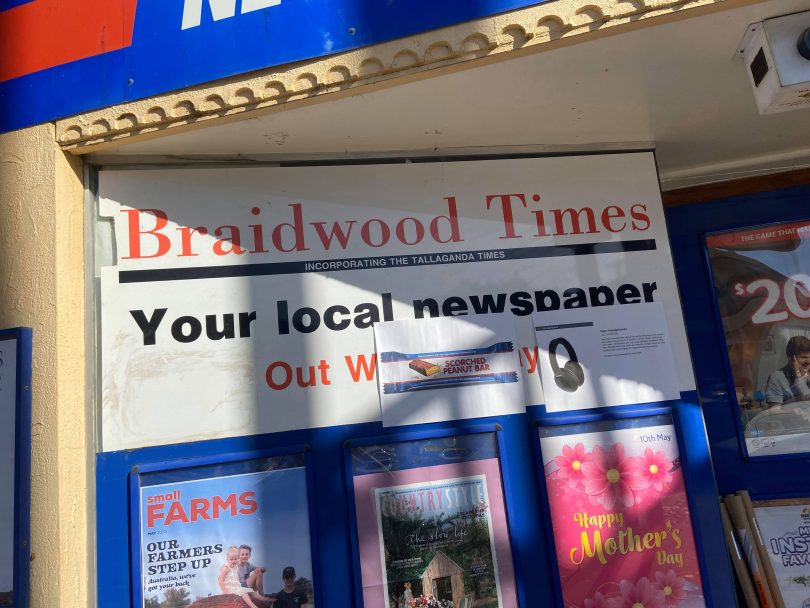
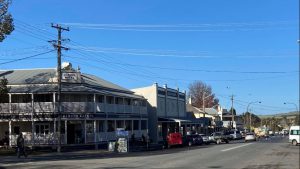
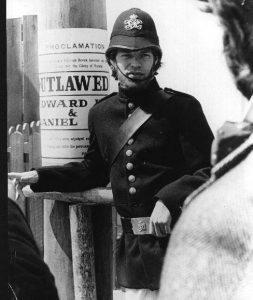
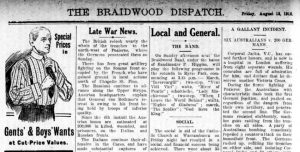
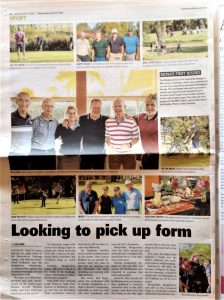
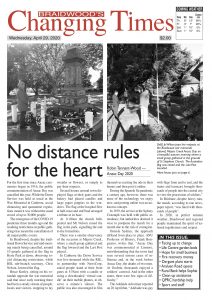
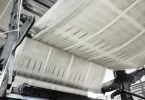





Ever heard of the Braidwood Bugle? It’s where locals get the news from. The circulation decline of the BT was directly related to the loss of the former Editor and the introduction of the restrictive templates by ACM. There are, sadly, so many errors in the story.
Thanks for your feedback, Annie. This article was focusing on the Braidwood Times for academic purposes, but its been updated to include the Bugles contribution to Braidwood and vast audience in the town.
It was unfortunate that this article did NOT recognise the Braidwood Bugle
The paragraphs that follow below dishonor the incredible dedication and commitment that Alex Rea has made to her community by way of the Braidwood Bugle.
Caitlin Cassidy writes:
“The future is uncertain, but it helps to have people committed to their community, like Robin and Paul.
“With backing behind them, the pair have filled the recent media gap with the newly established Braidwood Changing Times.”
By saying the pair “have filled the recent media gap” is a slap in the face by a young journalist seemingly biased by her article’s subjects and failing in her research. Most disappointing.
Having seen first hand the MASSIVE contribution that the Braidwood Bugle made to informing the greater Braidwood community during the fires via the immediacy of social media, often up to 18 hours per day, to suggest a “media gap” is very poor and highly disrespectful.
Credit where credit is due – this article is well written and generally well researched and composed. Congratulations must also go to Robin and Paul for their commitment to their project .
Thanks for your feedback, Lei. This article was focusing on the Braidwood Times for academic purposes, but its been updated to include Alex’s contribution to Braidwood with the Bugle and its wide readership.
[…] Hill and Braidwood in NSW to Naracoorte in South Australia, these new media outfits were buoyed by […]